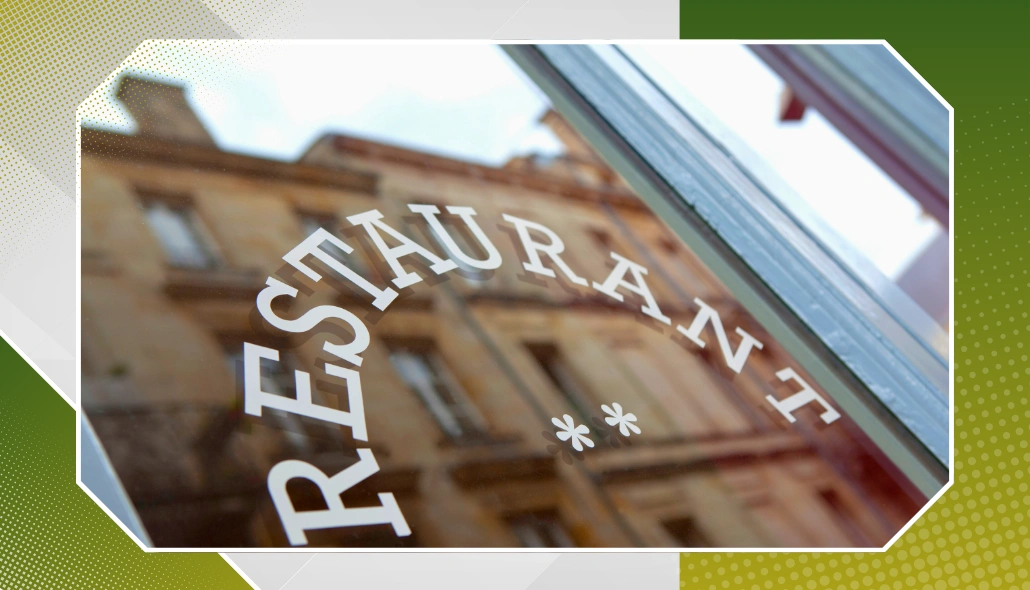Think of SEO as your digital storefront – it’s the first impression many potential diners will have of your restaurant. With successful SEO strategies in place, you can optimise your presence in local search listings, bring in greater traffic to your venue, strengthen your online presence, and connect with customers even before they come in through your door.
This blog reveals proven SEO strategies specifically designed for Canadian restaurants, helping you attract more customers and grow your business in the digital landscape.
Understanding SEO for Restaurants
Search Engine Optimisation (SEO) is like an online storefront, making your restaurant visible to potential customers who search online. It involves optimising your website and online visibility to rank quicker in search engine results, especially on Google.
Why Local SEO Matters for Restaurants
Recent data reveals striking insights about local search behaviour:
- 46% of all Google searches have local intent
- 88% of customers who explore local businesses on mobile calls or visit within 24 hours
- 78% of location-based mobile searches translate into offline purchases
Your restaurant’s success in local search results directly impacts your bottom line. When potential diners search for “best Italian restaurant near me” or “sushi in [your city],” your position in these results determines whether they’ll discover your establishment.
Key Elements of Restaurant SEO
Here are the key elements that contribute to effective SEO for restaurants:
- Local Keywords: Targeting location-specific search terms
- Business Information: Maintaining accurate contact details and hours
- Customer Reviews: Building trust through authentic feedback
- Menu Optimisation: Making your dishes discoverable online
- Mobile Presence: Ensuring a seamless mobile experience
The digital landscape has transformed how diners find restaurants. A strong SEO strategy puts your establishment in front of hungry customers when they decide where to eat.
Website Optimisation
Your restaurant’s website is a digital storefront, making its performance crucial for attracting and retaining customers. A well-optimised website can result in the difference between securing a reservation and losing a potential guest to competitors.
Site Speed: The 3-Second Rule
- 53% of mobile users ignore websites that take longer than 3 seconds to load
- Compress images without sacrificing quality
- Minimise HTTP requests
- Use browser caching to store static files
- Choose a stable hosting provider with servers in Canada
Mobile-Friendly Design Elements
- Adjustable layouts that adapt to different screen sizes
- Touch-friendly buttons and menus
- Easy-to-read fonts at appropriate sizes
- Quick-loading images optimised for mobile devices
- Click-to-call functionality for instant reservations
Essential Navigation Features
- Clear menu button placement
- Prominent reservation system
- Easy-to-find contact information
- Simple, intuitive layout structure
- Streamlined checkout process for online orders
A properly optimised website enhances user experience through fast loading times, seamless mobile functionality, and intuitive navigation. These elements work together to keep potential customers engaged with your site, increasing the likelihood of converting online visitors into dining guests.
Your website’s technical performance directly impacts your search engine rankings. Google prioritises fast-loading, mobile-friendly websites in search results, making website optimisation a critical factor in your restaurant’s online visibility.
Local SEO Strategies
Google My Business (GMB) is your restaurant’s digital storefront in local search results. A well-optimised GMB profile increases your visibility when interested customers search for “restaurants near me” or specific cuisine types in your area.
Essential GMB optimisation steps:
- Add high-quality photos of your restaurant, dishes, and ambience
- Keep business hours accurate and updated
- List your complete menu
- Include your restaurant’s specific attributes (parking, delivery options, wheelchair accessibility)
Review management best practices:
- Respond to all reviews – positive and negative
- Address negative feedback professionally and offer solutions
- Thank customers who leave positive reviews
- Encourage satisfied customers to share their experiences
Your GMB profile’s engagement metrics directly impact your local search rankings. Active profiles with recent reviews, photos, and responses typically rank higher in local search results. Regular updates to your GMB posts with special offers, events, or new menu items signal to Google that your business engages with customers online.
Consider setting up automated review requests through your POS system or reservation platform to maintain a steady stream of fresh reviews. This consistent flow of customer feedback helps build trust with potential diners while boosting your local SEO performance.
Utilising User-Generated Content (UGC) and Link-Building Techniques
User-generated content works as powerful social proof for your restaurant. When diners share photos, reviews, and experiences on social media, they create authentic content that resonates with potential customers.
Here’s how to leverage UGC effectively:
- Create a branded hashtag for your restaurant
- Display customer photos on your website
- Share customer reviews across social platforms
- Host photo contests with dining rewards
Building quality backlinks strengthens your restaurant’s online authority. Secure valuable links through:
- Partnerships with local food bloggers
- Features in online city guides
- Collaborations with nearby businesses
- Participation in community events
- Guest posts on culinary websites
Encourage customer engagement by:
- Setting up Instagram-worthy photo spots
- Offering incentives for honest reviews
- Creating shareable menu items
- Engaging with customer posts
- Running social media challenges
Quality backlinks from reputable food directories, local news sites, and industry blogs signal search engines that your restaurant is trustworthy and authoritative. This enhanced credibility helps boost your search rankings and visibility to potential diners.
Creating SEO-Friendly Menus and Content Creation Strategies
Your restaurant’s menu can be a powerful SEO tool when optimised correctly. Strategic keyword incorporation in menu items and descriptions helps search engines understand your offerings and attract potential diners.
Menu Optimisation Tips:
- Use descriptive, location-specific terms (e.g., “Vancouver-style sushi rolls”)
- Include popular food-related search terms naturally
- Add alt text to menu images
- Create separate pages for different menu categories
Blog Content Ideas for Restaurants:
- Recipe showcases and cooking tips
- Behind-the-scenes kitchen stories
- Seasonal ingredient spotlights
- Local food culture articles
- Chef interviews and profiles
Your blog posts create opportunities to rank for long-tail keywords while building connections with your audience. A well-maintained blog also demonstrates expertise and keeps your website content fresh, factors that search engines value highly.
Content Creation Best Practices:
- Research relevant keywords using tools like Google Keyword Planner
- Write detailed dish descriptions incorporating searched terms
- Update content regularly with seasonal menus
- Include high-quality food photography with optimised image tags
- Create location-specific landing pages for multiple branches
Leveraging Online Directories for Brand Awareness
Restaurant directories are powerful tools to increase your brand’s online presence. Popular Canadian directories such as Yelp, TripAdvisor, and OpenTable are valuable platforms for potential customers looking for dining options.
Here’s why directory listings are essential for your restaurant:
- Enhanced Local Visibility: Each directory listing creates a new opportunity for customers to discover your restaurant in local search results.
- Trust Building: Being present on well-known platforms adds credibility to your establishment.
- Consistent NAP Data: Maintaining consistent Name, Address, and Phone number information across directories strengthens your local SEO signals.
- Direct Reservations: Many directories offer built-in reservation systems, making it easier for customers to book a table.
Key directories for Canadian restaurants:
- Zomato
- DineTOnight
- RestoBiz
- YellowPages Canada
- TheFork
Remember to keep all your directory listings accurate and up to date. To maximise your directory presence, include high-quality photos, current menus, and operating hours. Regularly checking these platforms lets you respond quickly to customer feedback and maintain an active online presence.
Conclusion
The digital landscape for restaurants continues to evolve, making SEO an essential ingredient for success in Canada’s competitive dining scene. These proven strategies – from website optimisation to directory listings – create a robust online presence that attracts more customers to your establishment.
Your restaurant’s SEO success depends on consistently implementing and adapting to changing search trends. Start small, measure your results, and modify your approach based on what works best for your unique brand.
Ready to boost your restaurant’s online visibility? Rankingeek Marketing Agency offers specialised SEO services that can help Canadian restaurants achieve higher rankings and increased customer engagement. Contact Us today to discuss how we can boost your restaurant’s digital presence.




